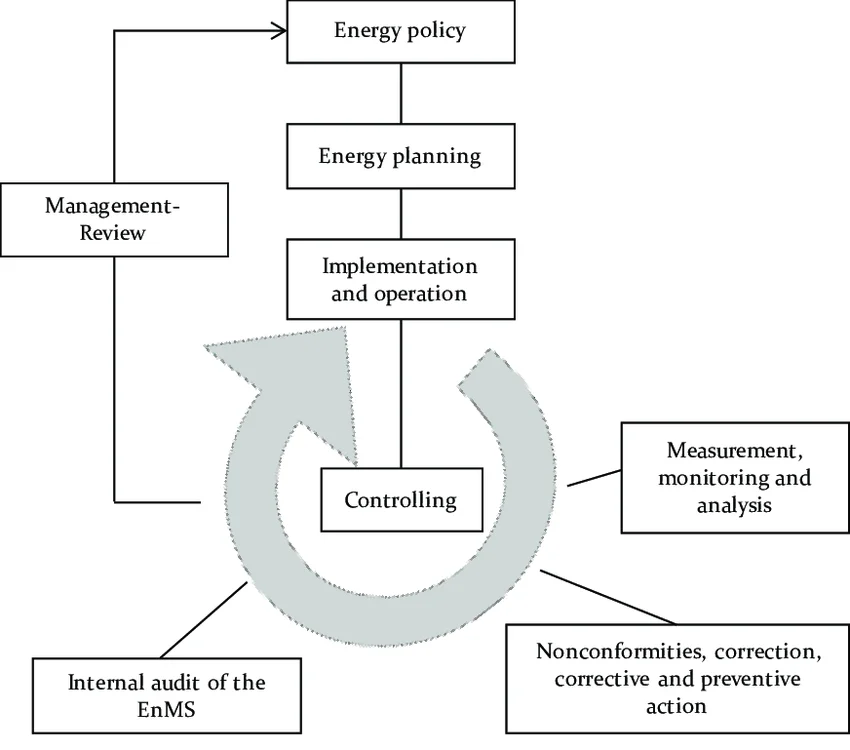The acronym ESG (Environmental, Social, and Governance) was first used in 2005, in the “Who Cares Wins” report (in Portuguese, “Who Cares Wins”. Developed by the UN Global Compact (United Nations), the concept has been gaining space in the media and business in recent years. According to the Vanzolini Foundation, to balance these three pillars, the industry must integrate this thinking into the core business and organizational culture.
Actions such as developing reverse logistics systems and defining the destination of waste, prioritizing recycling, fall under the environmental pillar. In the social pillar (Social), it is possible to invest in qualification and training of employees. Finally, governance can be improved when the organization’s processes are designed in a transparent manner and with optimized management.
In Brazil, the study “ESG Maturity in Brazilian Companies: Advances and Challenges 2024“, by Beon ESG and Aberje, interviewed 401 leaders and revealed that 54% of large companies have sustainability strategies, but face challenges in metrics and transparency. The report “ESG in Brazilian Industry“, by the UN Global Compact, points out that 78.4% of organizations have incorporated ESG, with emphasis on large industries.
In Latin America, SAP’s “Sustainability on the Agenda of Latin American Leaders” study interviewed 400 companies and highlighted the accelerated growth of ESG adoption, with emphasis on Brazil. Forbes, in “ESG Beyond Borders“, discusses the importance of sustainability in the value chain, highlighting Brazil’s position as a crucial player in the global sustainability agenda. In North America, KPMG’s “Global Manufacturing Prospects 2023” study analyzed 182 CEOs and highlighted challenges in ESG, talent retention and technology, in addition to carbon neutrality goals.
Energy Management with ISO 50001: Standardization and Efficiency
ISO 50001 is a management tool focused on energy control, serving as an essential instrument for the standardization of energy management. It can be implemented in industries of different levels of maturity, which use various energy sources, from electricity to gas. Its guidelines were incorporated into the National Energy Efficiency Plan (PNEf) and the National Energy Plan 2030, as mechanisms for saving consumption.
In Brazil, ISO 50001 is represented by ABNT and its application in industries follows a structured process, which includes:
- Context analysis: Understand the needs and expectations of stakeholders, determine the scope and structure of the Energy Management System (EMS).
- Commitment to leadership: Define energy policy, responsibilities and authorities.
- Setting energy goals: Planning to achieve these goals.
- Management of energy use and consumption: Implementation of systems, communication and documentation.
To achieve the defined goals, ISO 50001 focuses on the search for continuous improvement, using two basic tools: the PDCA cycle of the quality area and the level of energy consumption of the thermodynamics area. The figure below illustrates how this process works.

Any organization, regardless of its energy management domain, can implement ISO 50001 to establish a baseline and improve at an appropriate pace. This is done regardless of context, meaning that there are no absolute energy performance targets other than those set out in the industry’s energy policy and compliance with legal requirements. Thus, two organizations performing similar operations, but with different energy performances, can both comply with its requirements (ISO 50001, 2011).
ESG: Sustainability that Generates Results
According to Bureau Veritas (2020), a French company specializing in inspection testing, ISO 50001 certification can improve energy performance by up to 30%. In addition, the same institution estimates that the standard positively impacts 60% of the world’s total energy consumption. These benefits have encouraged the Brazilian Government to create several programs and initiatives aimed at energy efficiency and sustainability.
The Energy Efficiency Program (PEE) aims to promote the efficient use of electricity through the adoption of various technologies and practices in everyday life. Focused on the industry, we have the Brazilian Labeling Program (PBE), which classifies products according to energy efficiency, and the Electricity Conservation Program (Procel).
These actions encourage the industry to produce and consumers to choose more efficient products, which consume less energy. According to Sebrae (2023), Procel’s actions, by labeling products that use electricity, resulted in savings of 23 TWh, which represents 4.87% of electricity consumption in 2018.
In addition to financial and environmental gains, the efficient use of energy also impacts other areas. The NGO American Council for an Energy-Efficient Economy (2022) shows that a 15% reduction in annual energy consumption would result in 2,190 lives saved. These data reinforce that the programs bring many positive results, impacting the entire environment in a significant way.
Data Science: Pillar of Sustainable Development
The implementation of standards and programs such as ISO 50001 reduces greenhouse gas emissions, decreases energy costs, and mitigates other environmental impacts associated with energy management. In addition, ISO 50001 promotes organizational transparency and facilitates communication in the management of energy resources, serving as a basis for the evaluation and prioritization of the application of new effective technologies, which allow integration with other systems.
To ensure that production is aligned with the established goals and objectives, it is essential that the industry install indicator monitoring and measurement systems, a prerequisite of the standard. One of the options for this is the implementation of solutions that allow data collection and analysis. From this data, it is possible to better understand consumption patterns and assist in decision-making related to energy use. This digitalization also makes it possible to review the effectiveness of the current cycle, through the history made available, promoting continuous improvement.
These technologies allow integration with other systems, and can also be used to monitor other resources, such as water. For example, smart monitoring of this resource in a beverage industry has resulted in more efficient use and less waste.
Like ISO 50001, data culture can be implemented in industries with different levels of maturity. This standard is just one example of how ESG actions can be executed. Through digitalization, it is possible to discover and explore various improvements that contribute to sustainable development and raise the industry to a new level of productivity.